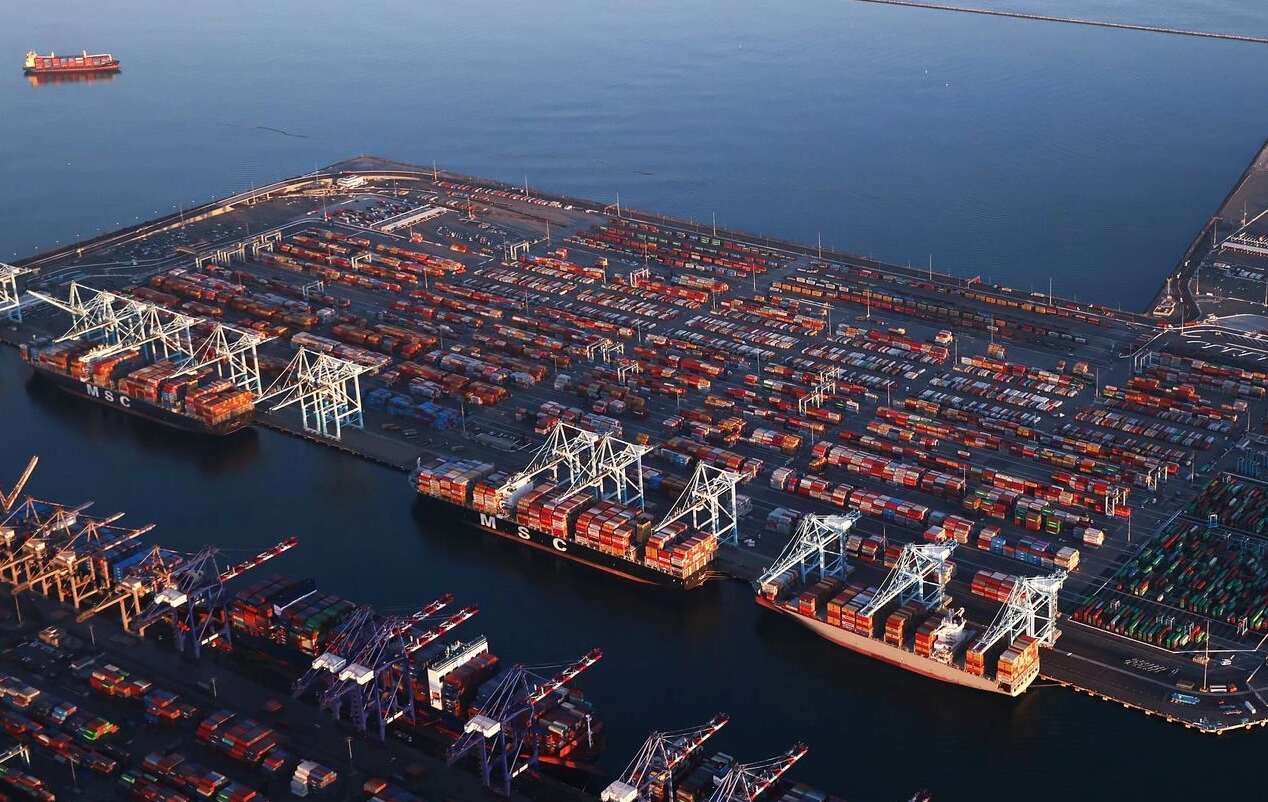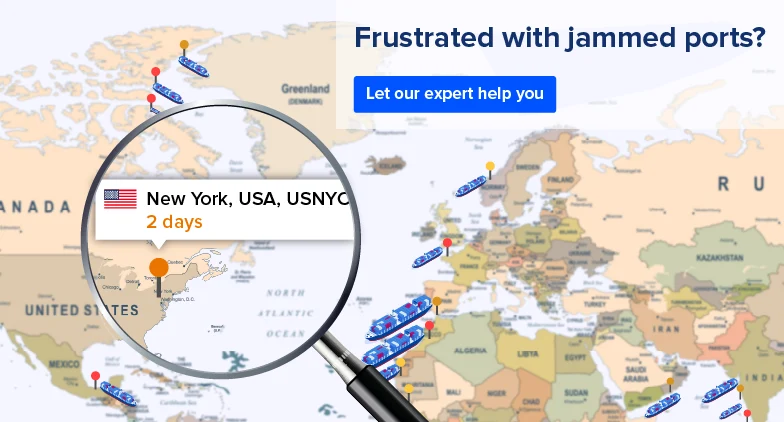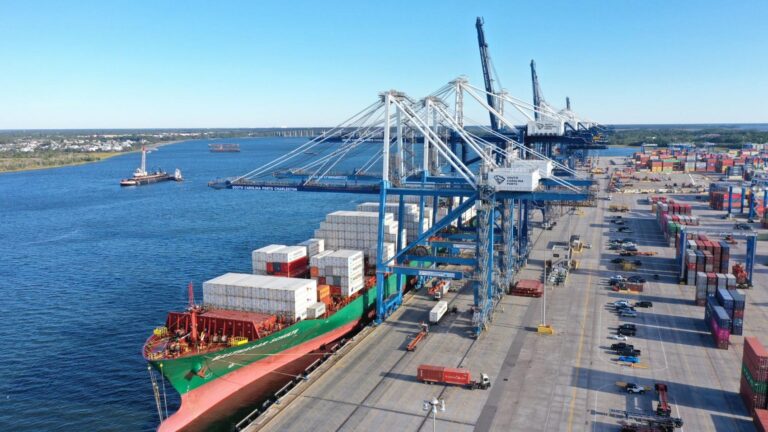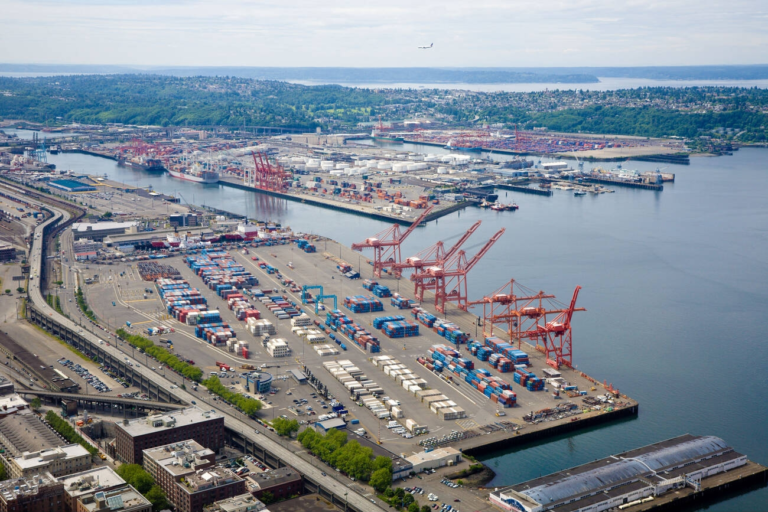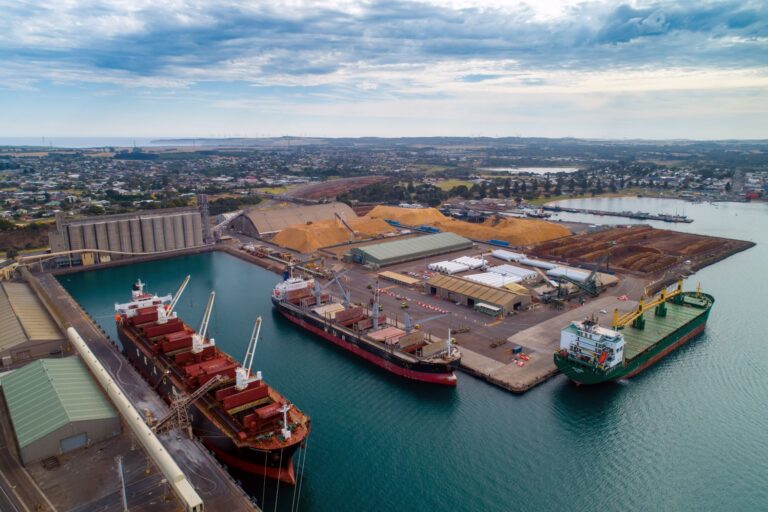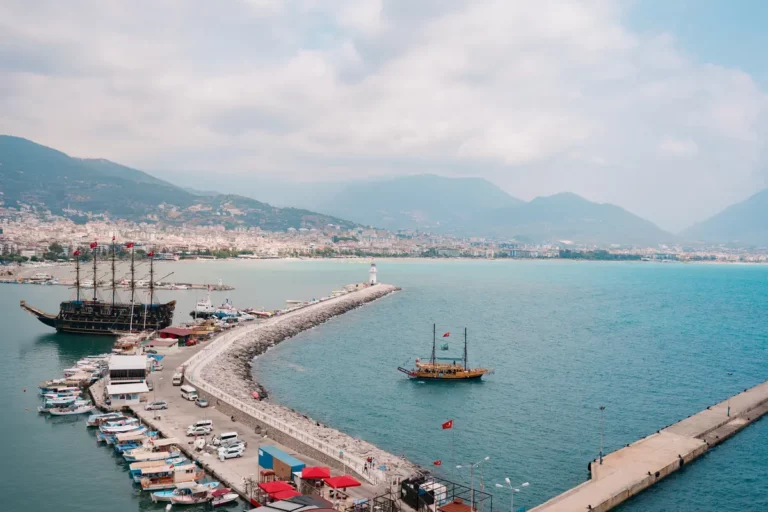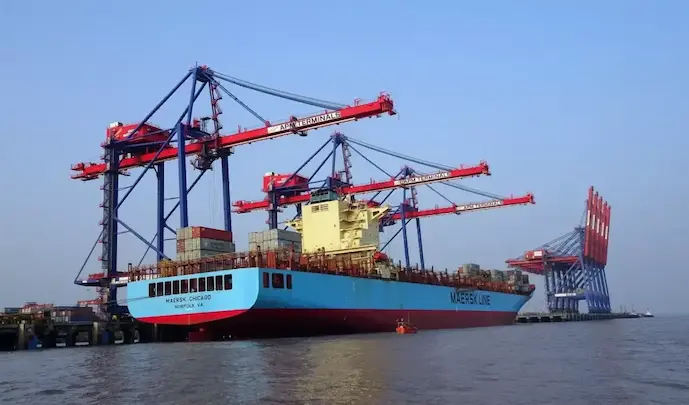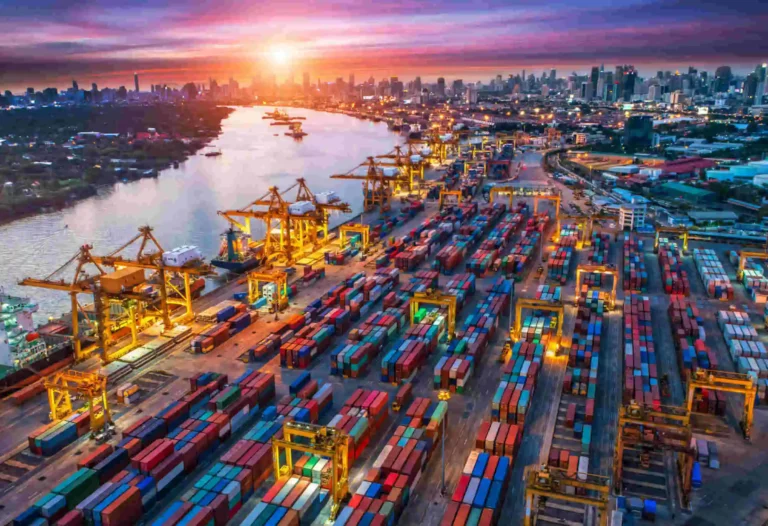Port of Los Angeles (POLA), Key Information, D&D costs, and all that you need to know.
Located in San Pedro Bay, 25 miles south of downtown Los Angeles, the Port of Los Angeles (POLA), the busiest container port in North America, has maintained its status as one of the biggest ports in the world for over twenty years. The port supports a productive, sustainable supply chain through modern technology that enhances the efficiency, predictability, and dependability of the maritime commerce movement of goods worldwide.
Also called America’s port, the Port of Los Angeles offers passenger and cargo terminals, including cruise, container, vehicle, breakbulk, dry, and liquid bulk, and warehousing facilities that handle billions of dollars’ worth of cargo each year. The efficient tracking of containers is a crucial aspect of its operations, ensuring smooth handling and transportation of goods. The port manages 20% of all arriving freight for the seaports in the USA and is spread out over 7500 acres.
The port plays a vital role in the global trade and maritime industry, serving as a major hub for the movement of goods between Asia, North America, and the rest of the world.
What makes it the Port of America?
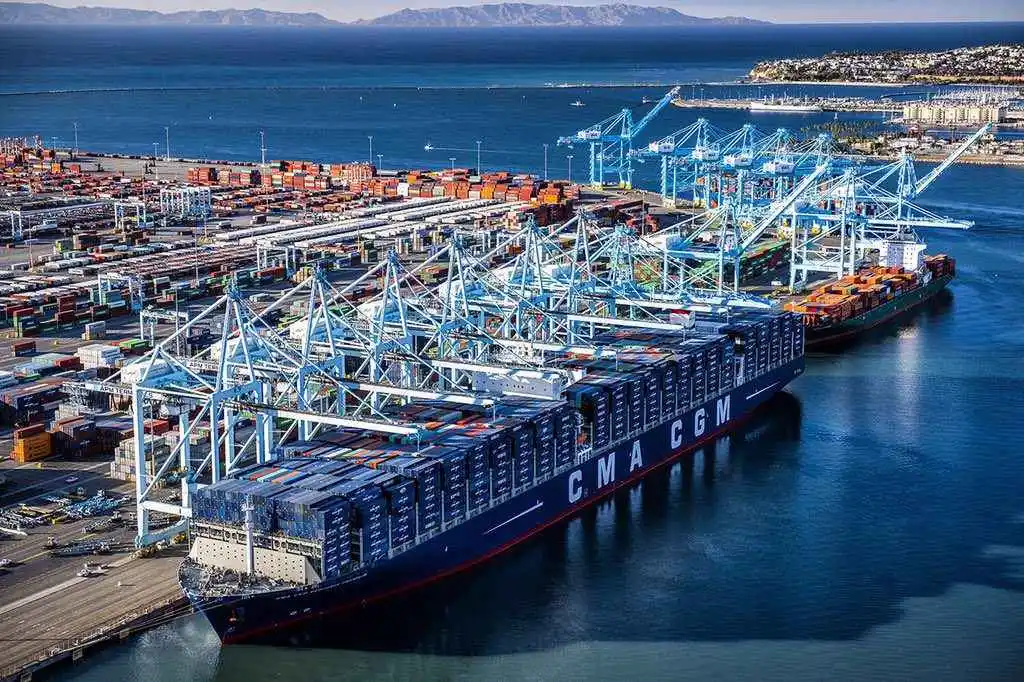
This booming harbor is renowned for its innovative environmental initiatives. It is dedicated to resource management, planning projects, and carrying out activities in a financially and environmentally appropriate way. At the same time, its innovative security measures and commitment to the local community are well known as well.
The port has also been leading the redevelopment of the L.A. Waterfront for the past ten years, enhancing public access to the sea, creating user-friendly infrastructure and services for the general public, and remaking the port coastline into a top-tier tourist attraction.
The Port of Los Angeles finished Fiscal Year 2020–2021 with over 10.9 million TEUs, making it the first port in the Western Hemisphere to handle 10 million container units in a calendar year in June 2021. The port took upwards of 1 million TEUs in May 2021, making it the busiest month in its 114-year existence and the first port in the Western Hemisphere to do so.
History

The history of the Port of Los Angeles dates back to the late 19th century when it was established as a major center for trade and commerce on the West Coast. In the early days, the port was primarily used for shipping agricultural products and minerals from the surrounding areas. However, as the population of Los Angeles grew, the port became an increasingly important center for trade and commerce.
During World War II, the port played a crucial role in the war effort, serving as a major point of embarkation for troops and supplies. After the war, the port underwent significant expansion and modernization to handle the growing demand for global trade. In the following decades, the Port of Los Angeles became one of the busiest and most important ports in the world, handling a significant volume of cargo and serving as a major hub for trade between Asia, North America, and the rest of the world.
Management
The Port of Los Angeles is managed by the Los Angeles Board of Harbor Commissioners and the Harbor Department staff under the direction of an executive director. The port is run as a self-supporting enterprise and is not funded by tax dollars. The port’s operations are overseen by the Los Angeles Board of Harbor Commissioners, appointed by the mayor of Los Angeles and confirmed by the city council.
The board sets policies, approves budgets, and ensures that the port is run efficiently and effectively. The Harbor Department staff manages the day-to-day operations of the port, including cargo handling, security, environmental programs, and infrastructure development. The Port of Los Angeles also works closely with various federal, state, and local agencies to ensure compliance with regulations and to promote trade and economic development.
Infrastructure

The Port of Los Angeles boasts state-of-the-art infrastructure and facilities, including a network of berths, terminals, and warehouses capable of handling a wide variety of cargo. The port has 44 cargo terminals, including container, breakbulk, and automobile terminals.
Additionally, the port has a large fleet of cargo handling equipment, such as cranes, straddle carriers, and reach stackers, to ensure efficient and timely cargo handling. The port also has many warehouses and storage facilities to support the storage and handling of goods.
Cargo Volume
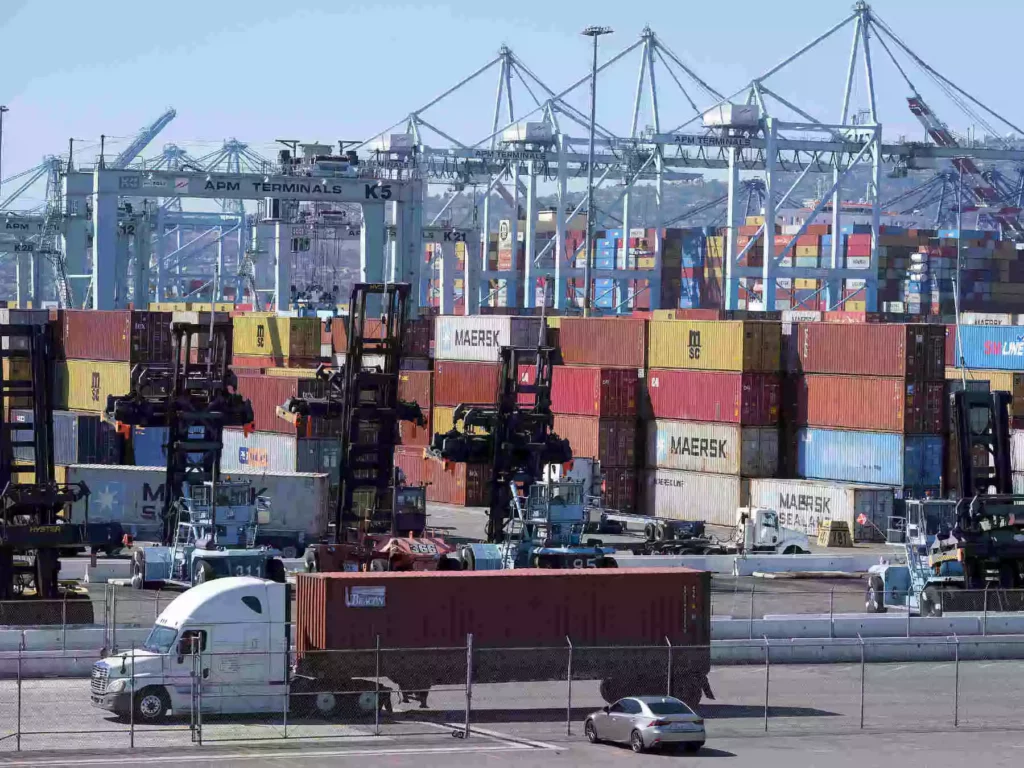
In terms of cargo volume and tonnage, the Port of Los Angeles handles over 9 million TEUs (twenty-foot equivalent units) annually, making it the busiest container port in the United States. The port also handles a significant volume of bulk and breakbulk cargo, including automobiles, steel, and other heavy industrial goods.
Top Import & Export
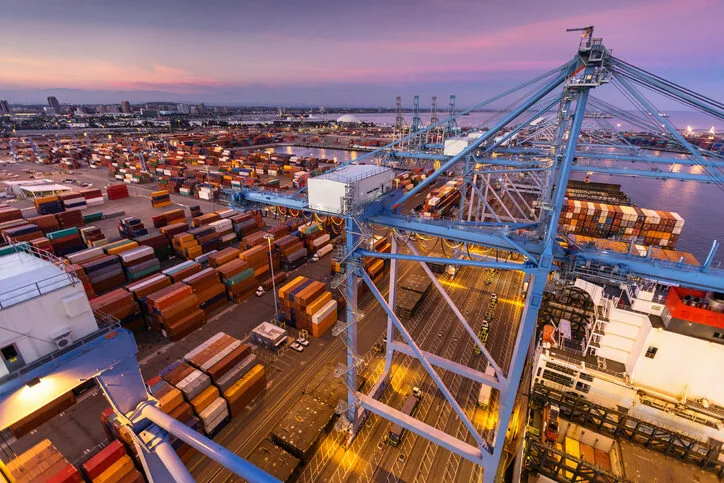
The port’s top imports include automobiles, electronic equipment, furniture, and textiles, while its top exports include agricultural products, machinery, and waste and scrap materials. The port’s top trading partners are China, Japan, South Korea, Vietnam, and Taiwan. These countries are major suppliers of manufactured goods to the United States and major buyers of American agricultural products and raw materials.
Security and Compliance
The Port of Los Angeles adheres to all federal and state laws, regulations, and import and export restrictions guidelines. These restrictions include but are not limited to, laws related to trade sanctions, export controls, anti-terrorism, anti-money laundering, and anti-bribery. The U.S. Customs and Border Protection (CBP) is responsible for enforcing these laws and regulations at the port. All cargo is subject to inspection by CBP before being loaded on vessels or transported inland.
Additionally, the U.S. Department of Agriculture (USDA) and the U.S. Fish and Wildlife Service (FWS) inspect agricultural and wildlife products. The port also works closely with other federal agencies, such as the FBI, DEA, and Department of Homeland Security, to ensure compliance with all applicable laws and regulations and protect its security and users.
Plans for Development
The Port of Los Angeles has several infrastructure development plans in place to support its growth and meet the increasing demand for cargo handling. One of the most significant plans is the Middle Harbor Redevelopment Project, which consolidates two ageing terminals into a new, state-of-the-art facility. This project is expected to double the port’s capacity and improve efficiency by reducing truck turn times and increasing the use of on-dock rail. Additionally, the port is investing in new technologies such as automation and digitalization to improve cargo handling and reduce congestion.
The port is also planning to expand its rail infrastructure, increase the use of on-dock rail, and improve intermodal connections to other transportation hubs. The port is also working on a new project to increase the capacity of the China Shipping Terminal, which will help sustain the trade relationship with the most significant trade partner. Furthermore, the Port of Los Angeles is committed to reducing its environmental impact and is investing in clean energy and sustainability projects to support that goal.
Impact on Local and National economy
The Port of Los Angeles is a major contributor to the local and national economy. As the busiest container port in the United States, it handles over 9 million TEUs annually, facilitating international trade and supporting the movement of goods across the country. The port is a primary gateway for trade between the United States and Asia and the top container port for trade with China.
The port’s operations generate billions of dollars in economic activity each year, supporting local businesses and creating jobs for over 300,000 people in the Los Angeles area. The port’s infrastructure development plans and investments in new technologies also support the growth and competitiveness of the American economy. Additionally, the port is a significant source of tax revenue for the city of Los Angeles and the state of California, providing funding for vital public services and infrastructure.
Detention And Demurrage data
IMPORT
| Shipping line | Equipment | Days | Charge |
| Maersk | Dry Container 20’/40’ | 1-4 | Free |
| Maersk | Dry Container 20’/40’ | 5-8 | 140 USD |
| Maersk | Special/Reefer 20’/40’ | 1-3 | Free |
| Maersk | Special/Reefer 20’/40’ | 4-7 | 330 USD |
| COSCO | Dry Containers/ HC 20’/40’ | 1-4 | free |
| COSCO | Dry Container/HC 20’/40’ | 5-9 | 125 USD |
| COSCO | Special/Reefer 20’/40’ | 1-3 | Free |
| COSCO | Special/Reefer 20’/40’ | 4-8 | 325 USD |
| MSC | Dry Container 20’/40’ | 1-4 | Free |
| MSC | Dry Container/HC 20’/40’ | 5-10 | 57 USD/114 USD |
| MSC | High Cube Reefer 20’/40’ | 1-4 | Free |
| MSC | High Cube Reefer 20’/40’ | 5-10 | 75 USD/150 USD |
| Hapag | Dry Container/HC 20’/40’ | 1-5 | free |
| Hapag | Dry Container/HC | 6-10 | 220 CD |
| Shipping line | Equipment | Days | Charge |
| Maersk | Dry Container 20’/40’ | 1-4 | free |
| Maersk | Dry Container 20’/40’ | 5-8 | 245 USD |
| Maersk | Special / Reefer 20’/40’ | 1-2 | Free |
| Maersk | Special/Reefer 20’/40’ | 3-5 | 410 USD |
| Hapag | Dry container/HC 20’/40’ | 1-4 | Free |
| hapag | Dry Container/HC 20’/40’ | 5-9 | 194 USD/ 228 USD |
| Hapag | Special/ Reefer 20’/40’ | 1-4 | Free |
| Hapag | Special/Reefer 20’/40’ | 5-9 | 284 USD/318 USD |
| MSC | Dry Container/HC 20’/40’ | 1-4 | free |
| MSC | Dry Container/HC 20’/40’ | 5-10 | 120 USD/150 USD |
| MSC | Reefer 20’/40’ | 1-3 | free |
| MSC | Reefer 20’/40’ | 3-6 | 360 USD |
EXPORT
| Shipping line | Equipment | Days | Charges |
| Maersk | Dry Container 20’/40’ | 1-4 | Free |
| Maersk | Dry Container 20’/40’ | 5-8 | 140 USD |
| Maersk | Special/Reefer 20’/40’ | 1-3 | Free |
| Maersk | Special/Reefer 20’/40’ | 4-6 | 330 USD |
| COSCO | Dry Container/HC 20’/40’ | 1-4 | Free |
| COSCO | Dry Container/HC 20’/40’ | 5-9 | 120 USD |
| COSCO | Reefer 20’/40’ | 1-3 | Free |
| COSCO | Reefer 20’/40’ | 4-8 | 325 USD |
| Hapag | Dry Container 20’/40’ | 1-4 | Free |
| Hapag | Dry Container 20’/40’ | 5-8 | 175 USD |
| Shipping line | Equipment | Days | Charge |
| Maersk | Dry Container 20’/40’ | 1-7 CD | Free |
| Maersk | Dry Container 20’/40’ | 8-11 | 150 USD |
| Maersk | Reefers 20’/40’ | 1-7 | Free |
| Maersk | Reefer 20’/40’ | 8-10 | 350 USD |
Top 10 interesting facts about POLA
- The Port of Los Angeles is the busiest container port in the United States, handling over 9 million TEUs (twenty-foot equivalent units) annually.
- The port is located in San Pedro Bay, about 20 miles south of downtown Los Angeles.
- The port encompasses 7,500 acres of land and water and includes 43 miles of waterfront.
- The port is a major gateway for trade between the United States and Asia and is the top container port for trade with China.
- The port is also a major center for the movement of automobiles, with several car import and export terminals located on the property.
- The port’s infrastructure includes 27 cargo terminals, two cruise ship terminals, and a state-of-the-art on-dock rail facility.
- The port has been in operation since 1907, one of the oldest continuously operated ports on the United States West Coast.
- The port is home to several museums, including the Los Angeles Maritime Museum, which tells the story of the port’s history and role in the city’s development.
- The port is a major employer in the Los Angeles area, providing jobs for over 300,000 people in the region.
- The port actively works to reduce its environmental impact by implementing sustainable practices such as using electric and hybrid cranes, promoting clean air initiatives, and investing in renewable energy sources.
Overall, the Port of Los Angeles is well-equipped to handle a wide range of cargo. With its advanced infrastructure, facilities, and equipment, it can handle the growing demand for global trade and ensure the smooth and efficient movement of goods worldwide.
In conclusion, the Port of Los Angeles is a vital component of the global trade and maritime industry, handling a significant volume of cargo and serving as a major hub for the movement of goods between Asia, North America, and the rest of the world. With its rich history, strong trade ties and ongoing modernization plans, the Port of Los Angeles is well-positioned to continue playing a crucial role in global trade for years to come.
Looking for a hassle-free shipping process with complete visibility on the movement of your cargo?
Fix a free walkthrough demo of how GoComet’s solution can give you a 100 percent multi-modal supply chain visibility and help you drive double-digit cost savings in your supply chain, while eliminating all the pain points you may currently face due to the lack of automation.
